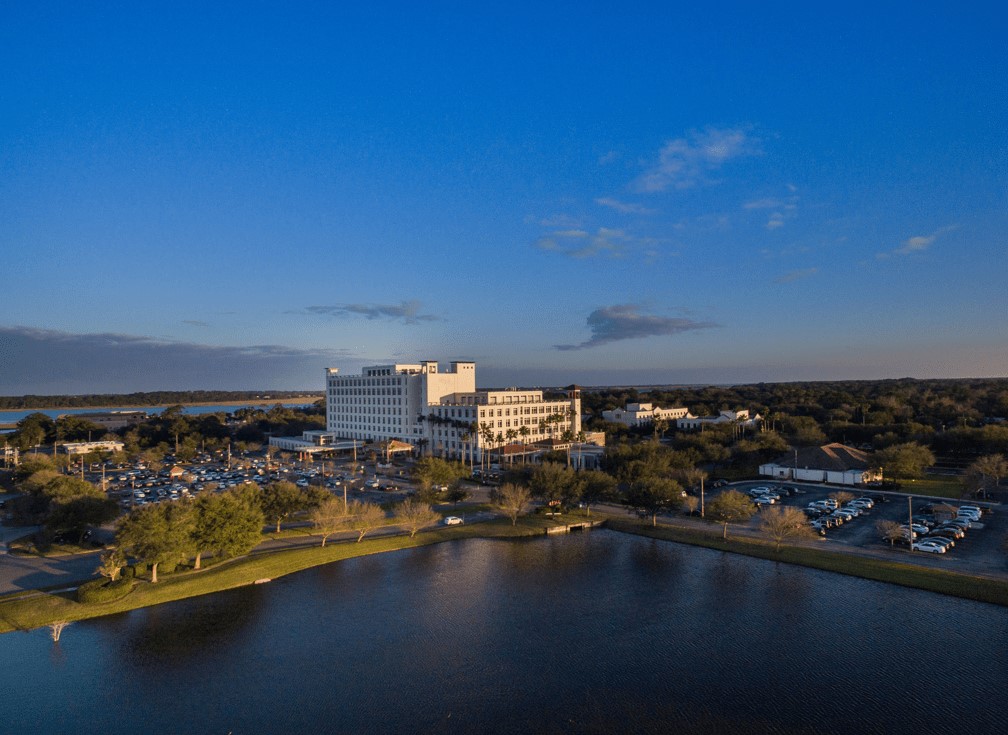
Hospital History
Over 130 years ago, the only public hospital within the 90-mile area between Jacksonville and Daytona Beach was the Alicia Hospital, located on Marine and Tremerton Streets, which at the time was the southern end of the city of St. Augustine.
In 1888, Henry Morrison Flagler gathered a group of residents and shared his vision of creating a health care facility that would always meet the needs of St. Augustine residents and visitors. This dream became a reality when Flagler Hospital, originally named Alicia Hospital, first opened its doors in 1890.
Monumental events, such as a destructive fire in 1916, were overcome as Flagler Hospital continued to live up to the original commitment of its founders. After the fire, the “new” Flagler Hospital opened in 1921. A grand building for its time, the three-story structure surpassed the original hospital’s size and medical capabilities. Over the years, the hospital experienced many changes as it kept pace with advances in medicine and the growth of St. Johns County.
In 1989, Flagler Hospital was moved from the Marine Street location, expanding to its existing 75-acre campus at U.S. Highway 1 and State Road 312. With this move, hospital trustees resolved to remember the past and keep memories of the hospital’s founders kindled as the cornerstone of the new Flagler Hospital. Along with increased square footage for patient care came many new and expanded departments of medicine, including centers dedicated to cancer care, comprehensive heart and vascular care, imaging, spinal conditions, women’s health and bariatric surgery.
In 2000, Flagler Hospital completed the construction of an eight-story patient tower as well as additional facilities for subsidiary departments. This allowed the remaining hospital services to be moved to the current location. Currently, the hospital provides 316 acute care beds, has a medical staff of nearly 350 physicians and offers a full range of services to Northeast Florida residents.
Understanding that its scope and services go well beyond its hospital walls, Flagler Hospital expanded to become Flagler Health+ in 2019, with an aim to advance physical, social and economic health for the communities it serves. In addition to St. Augustine, we also serve the needs of those in northern St. Johns County and Putnam and Volusia counties, offering compassionate care in their neighborhoods.
A bright new beginning in health care began in 2023 when Flagler Health+ was acquired by the nationally recognized University of Florida Health and became UF Health St. Johns. This step forward allowed for enhanced access to the latest medical breakthroughs, expanded treatment options, clinical trials and world-renowned comprehensive care through UF Health. In recognition of its longstanding role in the care of our community, Flagler Hospital was renamed UF Health Flagler Hospital.
As we move toward the future, UF Health St. Johns continues to perpetuate its philosophy of being the community’s resource for lifesaving medical services. Residents of St. Johns County and surrounding communities have placed their trust in UF Health St. Johns to care for family members and bring new life into the world, and we look forward to carrying that responsibility into the future for generations to come.
